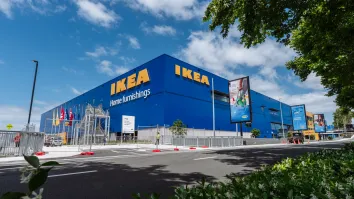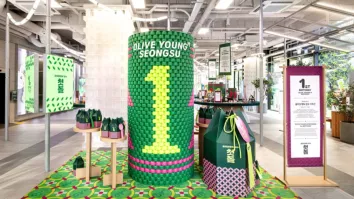Making sense of the big picture behind big data in retail
Retailers today have access to consumer data more than ever before, such as shoppers’ demographics, preferences, transaction details and purchase history. Muneerah Bee discovers how big data and analysis can help retailers identify what customers are looking for.
Shopping is no longer just adding an item to the shopping cart and shoppers today are spoilt for choice in physical stores and on online channels, across geographies, multiple platforms and devices.
Hence, the quality of customer experience can make or break a company in today’s competitive landscape. With evolving consumer behaviour and increasing demands, retailers now have to adopt a more structured approach to delivering customer experience and many of them therefore turn to big data — information that retailers are able to collect through every customer interaction, across every store, on different occasions, multiplied with different touch points and individual preferences — which they also combine with external data.
Jeremy Sim, global director, Manufacturing and High Tech, Qlik, explained: “By pooling and integrating information from different data points, retailers can find out who are the most valuable customers, what drives them to spend more, what products are gaining popularity and other crucial insights that will help them improve engagement at every stage of the buying process.”
He cited a McKinsey report that showed that when armed with advanced analytics, customer experience leaders gain rapid insights to build customer loyalty, make employees happier, achieve revenue gains of 5% to 10% and reduce costs by 15%-25% over two or three years.
Retailers that have the ability to combine information from different sources and derive meaningful, actionable insights on their customers from that big data will also stand out from the competition, according to V.R Srivatsan, managing director of Adobe South-east Asia. “They will be able to understand, and even predict, what their customers want and personalise the shopping experiences according to individual preferences, on a massive scale. Successful businesses will be able to deliver consistent content and experiences to every consumer no matter how he or she is engaging with the brand — whether it’s shopping in the physical store or through the online app, interacting on social media, receiving an email communication or speaking with a customer service agent on the phone. The experience from the same retailer will always be relevant, personalised and delightful, thereby building long-term customer loyalty and retention,” he shared.
While there are many benefits to reap from technology and innovation, the real winners will be those who understand what to do with all that data. It is said that the biggest challenge for retailers lies in uncovering customer purchase patterns hidden within the mountain of data they own and the ability to disseminate that insight to the merchants and marketers within the business. Sim ventured that retailers can achieve this by providing people across their organisation with access to data and empower them to make decisions swiftly, accurately and with confidence based on that data.
“Take the global fashion brand Ted Baker, for example. The brand was seeking to increase and improve knowledge of the brand’s customer base, with the ultimate aim to drive sales. Previously, it collected data manually from all stores in Excel spreadsheet software — but what was really needed was the ability to see which customers were making the purchases so the brand could understand their profiles better.
“Using data analytics not only enabled the retailer to gain more accurate customer insight data to fuel their marketing campaigns, but it also helped increase its in-store customer data capture by 60%. Ted Baker now has a single customer view across all stores and the ability to better understand its 1.2 million shoppers and prospective customers, delivering unprecedented insight into their buying behaviour,” he said.
While one of the most common use cases for big data in retail is marketing campaign automation and personalisation, some other examples include predicting customer behaviour and purchasing patterns, offering tailored products and better customer-targeting, monetising data that merchants and marketers can benefit from, and forecast demand to help retailers make use of data analysed, processed and built into the demand forecasting strategies.
Srivatsan shared the example of global cosmetics and well-being brand L’Occitane which traditionally had different teams responsible for handling emails and direct-mail campaigns, and relied on manual processes to design, execute and measure the campaigns. The digital team consequently turned to Adobe Experience Cloud to unify siloed customer profiles into a comprehensive, central source of information that provided a consistent, 360-degree view of its customers — including granular details such as birthdays, preferred communication methods, purchase history and product exchanges.
“Instead of expecting customers to navigate disconnected journeys with its sales, marketing and services teams, the luxury brand tapped into big data to design specific decision paths and experiences that reshaped customer behaviour and transformed them into multi-channel shoppers,” Srivatsan said.
“With consolidated customer profiles, L’Occitane was able to trigger welcome programmes and member birthday promotions, retarget customers with abandoned shopping carts and reactivate customers through ‘Thank you for purchase’ communications, invitation to product reviews and private sales, or recommend a friend — thereby creating value and intimacy through the entire customer lifecycle. Even when a negative feedback is received from a dissatisfied customer, marketing would be able to immediately suspend marketing messages to said customer until the issues are resolved,” he added.
Additionally, the interaction is not limited to digital platforms. As a customer enters a store, sales associates would also have a complete view, including customer purchase history and scores, to enable personalised interactions. If a customer is on the website and has not visited a store, marketing can encourage multi-channel shopping behaviours by delivering a coupon to incentivise thr customer to visit a physical store to redeem it.
L’Occitane’s investment in big data and analytics has enabled the brand to understand its customers’ needs and deliver personalised experiences across channels, Srivatsan affirmed. “The marketing team was able to launch more targeted and automated campaigns to customers on a local or regional basis, driving positive growths in revenues, customer reviews online and omni-channel customer engagements.”
Success with big data
JEREMY SIM, global director, Manufacturing and High Tech, Qlik, shared some examples of retailers who has been successful in leveraging big data and analysis.
-
South-east Asia’s online shopping and selling destination, Lazada, used to rely on manual reporting and analysis to extract information. The company then shifted to using data analytics to automate the process to gain more meaningful insights. Not only does data analytics allow the e-commerce giant to better understand customer behaviour, but it also helps merchants optimise their supply chain and ultimately deliver a more effortless shopping and selling experience for their customers. French sporting goods company Decathlon’s subsidiary, Decathlon
-
Pro, was seeking better insights from customer purchases and subsequent decision-making so that it could keep pace with the growing sporting goods market. Using data analytics, Decathlon Pro developed several applications to improve customer insights and evaluate market activities. Knowing which products were selling best during each season helped the retailer better plan for future seasonal roll-outs, having retail locations stock more of a high-selling item during peak seasons.



















 Advertise
Advertise






